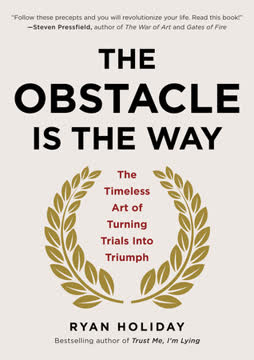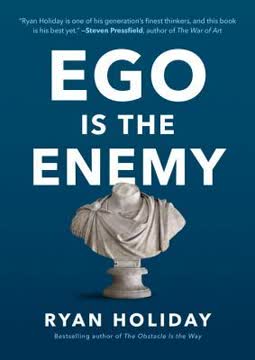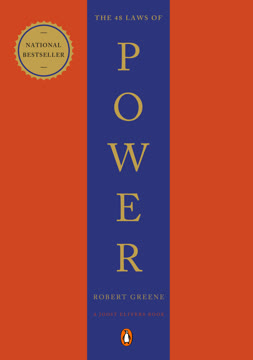Puntos clave
1. Crea una Falsa Sensación de Seguridad al Acercarte de Manera Indirecta
"Al principio, no debe haber nada del seductor en tu manera de actuar. La seducción debe comenzar en un ángulo, de manera indirecta, para que el objetivo solo se dé cuenta de ti gradualmente."
El enfoque indirecto desarma. Al acercarte a tu objetivo de manera indirecta, evitas activar sus defensas naturales contra la seducción. Esta estrategia implica:
- Hacerte amigo del objetivo primero, estableciendo confianza y comodidad
- Aparecer inofensivo o incluso desinteresado al principio
- Aumentar gradualmente tu presencia en su vida
La paciencia es clave. El enfoque indirecto requiere tiempo y sutileza. Debes:
- Permitir que el objetivo se acostumbre a tu presencia
- Construir lentamente una conexión sin revelar tus verdaderas intenciones
- Crear oportunidades para encuentros "fortuitos" que parezcan naturales
Al dominar este enfoque, creas una falsa sensación de seguridad en tu objetivo, haciéndolo más susceptible a tu eventual seducción.
2. Domina el Arte de la Insinuación para Eludir la Resistencia
"No hay defensa conocida, sin embargo, contra la insinuación: el arte de plantar ideas en la mente de las personas mediante pistas elusivas que echan raíces días después, incluso apareciendo como su propia idea."
La sutileza es poderosa. La insinuación te permite eludir la resistencia natural de una persona al:
- Plantar ideas de manera indirecta a través de sutiles insinuaciones y sugerencias
- Permitir que estas ideas echen raíces en la mente del objetivo con el tiempo
- Hacer que el objetivo crea que las ideas surgieron de sí mismo
Crea un sublenguaje. Para dominar la insinuación:
- Usa comentarios ambiguos que puedan interpretarse de múltiples maneras
- Emplea afirmaciones audaces seguidas de retractaciones o disculpas
- Combina conversaciones aparentemente banales con miradas o gestos seductores
Al dominar el arte de la insinuación, puedes influir en los pensamientos y deseos de tu objetivo sin que se dé cuenta de tu papel en el proceso.
3. Aparecer como un Objeto de Deseo para Aumentar tu Valor
"Queremos lo que otros desean. Para acercar a tus víctimas y hacer que anhelen poseerte, debes crear un aura de deseabilidad: de ser querido y cortejado por muchos."
La deseabilidad es social. Las personas se sienten naturalmente atraídas por lo que otros desean. Para aumentar tu valor percibido:
- Rodéate de admiradores o posibles pretendientes
- Crea una ilusión de popularidad y alta demanda
- Insinúa conquistas pasadas o relaciones con individuos deseables
Aprovecha la triangulación. Para mejorar aún más tu atractivo:
- Crea situaciones donde otros compitan por tu atención
- Permite que tu objetivo sea testigo de cómo otros te desean
- Haz que tu afecto parezca un premio por ganar
Al aparecer como un objeto de deseo, tocas la naturaleza competitiva de las personas y aumentas tu valor percibido, haciéndote más irresistible para tu objetivo.
4. Crea una Necesidad al Agitar la Ansiedad y el Descontento
"Una persona perfectamente satisfecha no puede ser seducida. Debes infundir tensión y desarmonía en la mente de tus objetivos."
Exploita los vacíos internos. Para crear una necesidad de ti en tu objetivo:
- Identifica y amplifica sus sentimientos de insatisfacción o vacío
- Resalta la falta de emoción o aventura en su vida
- Recuerda sus sueños no cumplidos o ideales abandonados
Planta semillas de duda. Tácticas sutiles para crear ansiedad incluyen:
- Hacer comparaciones que hagan que su vida parezca insuficiente
- Insinuar oportunidades perdidas o potencial no explorado
- Sugerir que se han desviado de su verdadero camino o deseos
Al crear un sentido de descontento y necesidad, te posicionas como la solución a sus problemas recién descubiertos, haciendo que tu seducción sea más poderosa y efectiva.
5. Elige a la Víctima Adecuada para una Seducción Exitosa
"Todo depende del objetivo de tu seducción. Estudia a tu presa a fondo y elige solo a aquellos que demuestren ser susceptibles a tus encantos."
La selectividad es crucial. No todos son igualmente seducibles. Para elegir a la víctima adecuada:
- Busca signos de vacío interno o insatisfacción
- Identifica a aquellos que están pasando por transiciones o dificultades
- Busca individuos que parezcan abiertos a nuevas experiencias
Reconoce el potencial. La víctima ideal a menudo tiene:
- Una cualidad que te atrae naturalmente, alimentando tu energía seductora
- Alguna vulnerabilidad o necesidad que puedes llenar
- Un indicio de receptividad a tus encantos particulares
Al seleccionar cuidadosamente tu objetivo, aumentas tus posibilidades de una seducción exitosa y evitas perder tiempo con aquellos que son poco propensos a sucumbir a tus encantos.
6. Envía Señales Mixtas para Cautivar y Confundir
"Una mezcla de cualidades sugiere profundidad, lo que fascina incluso mientras confunde. Un aura elusiva y enigmática hará que las personas quieran saber más, atrayéndolas a tu círculo."
Cultiva el misterio. Al enviar señales mixtas, logras:
- Crear intriga y fascinación en tu objetivo
- Impedir que te comprendan o te clasifiquen completamente
- Mantenerlos comprometidos mientras intentan descifrarte
Equilibra las contradicciones. Señales mixtas efectivas pueden incluir:
- Alternar entre calidez y frialdad
- Mostrar tanto fuerza como vulnerabilidad
- Combinar inocencia con insinuaciones de sensualidad
Al dominar el arte de las señales mixtas, creas un aire de profundidad y misterio que atrae a las personas, haciéndolas ansiosas por desentrañar el enigma que presentas.
7. Entra en Su Espíritu para Bajar Defensas y Aumentar Influencia
"Juega según sus reglas, disfruta lo que ellos disfrutan, adáptate a sus estados de ánimo. Al hacerlo, acariciarás su narcisismo profundamente arraigado y bajarás sus defensas."
Refleja y adapta. Para entrar en el espíritu de tu objetivo:
- Observa y imita sus comportamientos, intereses y valores
- Muestra un entusiasmo genuino por sus pasiones y pasatiempos
- Adapta tu estilo de comunicación para que coincida con el suyo
Crea comodidad y conexión. Al entrar en su espíritu, logras:
- Bajar sus defensas al parecer similar y no amenazante
- Acariciar su ego al validar sus gustos y elecciones
- Construir un profundo vínculo que los haga más susceptibles a tu influencia
Una vez que hayas entrado con éxito en su espíritu, puedes cambiar gradualmente la dinámica, llevándolos a tu mundo y aumentando tu influencia sobre ellos.
Última actualización:
FAQ
What's The Concise Art of Seduction by Robert Greene about?
- Exploration of Seduction: The book delves into the psychology and strategies behind seduction, presenting it as an art form that can be mastered.
- Character Archetypes: Greene categorizes seducers into different archetypes, such as the Siren, the Coquette, and the Rake, each with unique traits and strategies.
- Historical Context: It uses historical figures and stories to illustrate the principles of seduction, providing a rich context for understanding these strategies.
Why should I read The Concise Art of Seduction by Robert Greene?
- Practical Insights: The book offers practical advice and strategies that can be applied in real-life situations, enhancing interpersonal skills.
- Understanding Human Nature: It provides a deeper understanding of human behavior and relationships, helping navigate social dynamics more effectively.
- Engaging Writing Style: Greene's use of historical anecdotes makes the book both informative and entertaining, keeping readers captivated.
What are the key takeaways of The Concise Art of Seduction by Robert Greene?
- Seduction as Power: Seduction is presented as a subtle yet powerful form of influence, operating on emotional and psychological levels.
- Emotional Engagement: Engaging the target's emotions is crucial for creating a sense of longing and desire.
- Strategic Approach: Successful seduction requires patience, strategy, and understanding of human emotions.
What are the best quotes from The Concise Art of Seduction by Robert Greene and what do they mean?
- "Seduction is a kind of spell, an enchantment.": This highlights seduction as a transformative experience that captivates and enthralls the target.
- "The moment people feel that something is prohibited, a part of them will want it.": This underscores the psychological principle of desire for the forbidden.
- "Comfort and security are the death of seduction.": Greene warns that familiarity can diminish allure, emphasizing the need for ongoing intrigue.
What are the different types of seducers described in The Concise Art of Seduction by Robert Greene?
- The Siren: Uses allure and sensuality to captivate, creating an atmosphere of fantasy.
- The Coquette: Known for their playful and elusive nature, creating a push-and-pull dynamic.
- The Rake: Characterized by a passionate and intense approach, overwhelming targets with desire.
How does Robert Greene define seduction in The Concise Art of Seduction?
- Psychological Manipulation: Seduction is defined as the art of influencing emotions and desires through psychological tactics.
- Emotional Connection: It involves creating an emotional bond that transcends physical attraction.
- Theatricality: Seduction requires a captivating narrative and atmosphere, using charm and allure.
What are the phases of seduction outlined in The Concise Art of Seduction by Robert Greene?
- Create Temptation: Awaken desire by hinting at pleasures to come, keeping details vague.
- Lead Astray: Keep the target emotionally engaged and confused, creating unpredictability.
- The Precipice: Deepen the emotional connection with elements of danger and excitement.
What specific methods does Robert Greene suggest for seduction in The Concise Art of Seduction?
- Mirroring and Attention: Create a bond by mirroring the target's behavior and interests.
- Creating an Illusion: Craft a fantasy that aligns with the target's desires using symbols and imagery.
- Using Vulnerability: Show vulnerability to elicit sympathy and affection from the target.
How can I apply the concepts from The Concise Art of Seduction by Robert Greene in my life?
- Self-Reflection: Reflect on your seductive qualities and enhance them by identifying your archetype.
- Practice Emotional Engagement: Engage emotions in social contexts using techniques like teasing and tension.
- Be Bold: Make decisive moves when the opportunity arises, using confidence to seal the seduction.
What are the dangers of seduction as described in The Concise Art of Seduction by Robert Greene?
- Emotional Fallout: Seduction can lead to jealousy, possessiveness, and disappointment.
- Manipulation Risks: The act of seduction involves manipulation, which can backfire if the target feels used.
- Dependency: Seduction can create unhealthy dynamics if the target becomes overly attached.
How does The Concise Art of Seduction by Robert Greene address the theme of power in relationships?
- Power Dynamics: Seduction involves power dynamics where the seducer often holds the upper hand.
- Control and Surrender: The balance between control and surrender is crucial for maintaining interest.
- Psychological Influence: Seduction shapes perceptions and desires, leading to profound emotional connections.
What tactics does Greene suggest for creating desire in The Concise Art of Seduction?
- Stirring Discontent: Create dissatisfaction in the target's life to make them open to seduction.
- Insinuation: Plant subtle hints and suggestions that resonate with the target's desires.
- Creating Triangles: Surround yourself with admirers to enhance desirability and create competition.
Reseñas
El Arte Conciso de la Seducción recibe críticas mixtas. Algunos elogian sus percepciones sobre la psicología humana y las técnicas de seducción, mientras que otros lo critican por ser manipulador y poco ético. Los lectores aprecian el estilo de escritura de Greene y los ejemplos históricos, pero señalan la perspectiva masculina occidental del libro. Muchos encuentran el contenido provocador, aunque les cuesta aplicarlo en la práctica. Algunos reseñadores expresan incomodidad con el enfoque del libro hacia las relaciones, mientras que otros lo consideran útil para entender las dinámicas sociales. En general, las opiniones sobre el valor y la moralidad del libro varían ampliamente.
Similar Books























